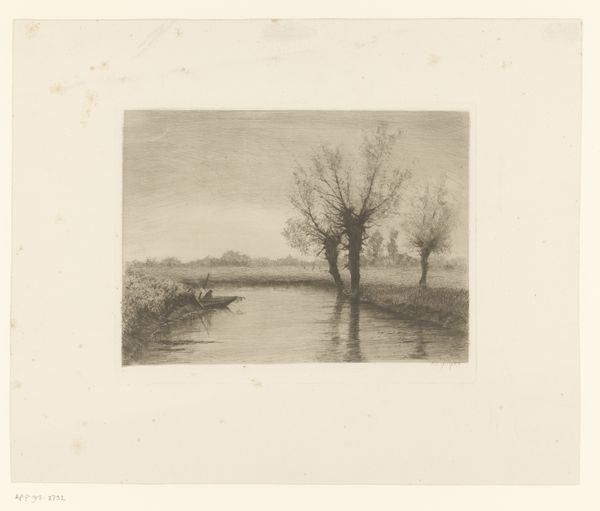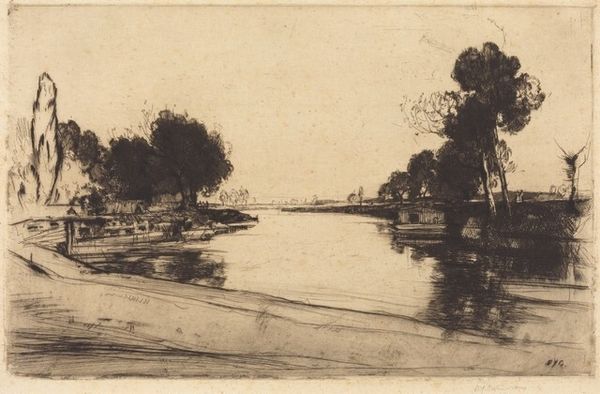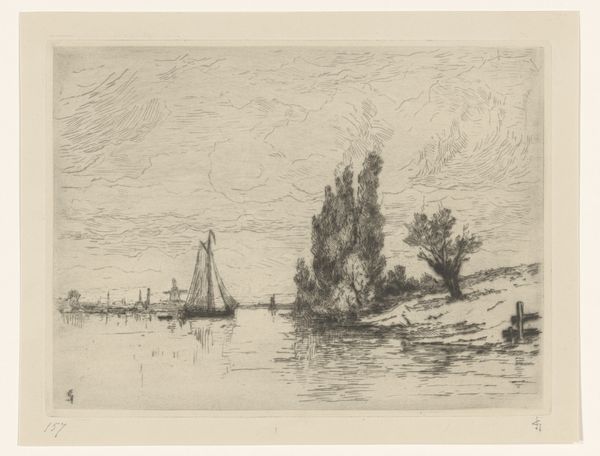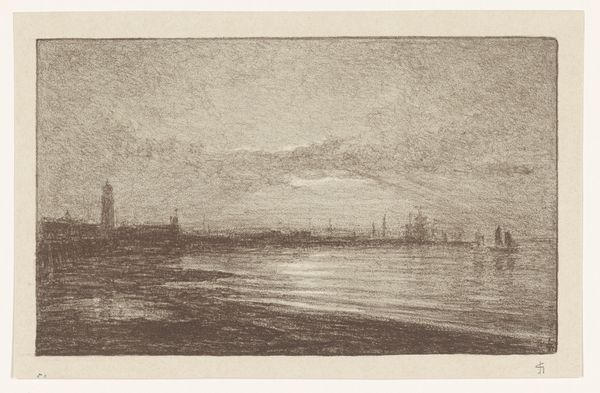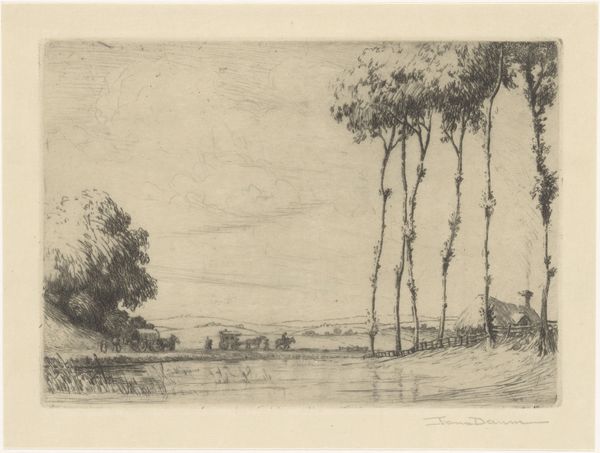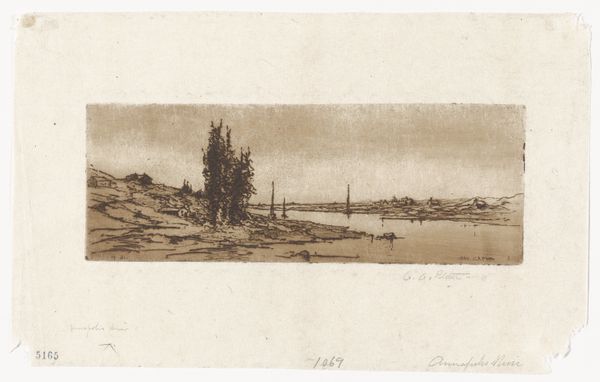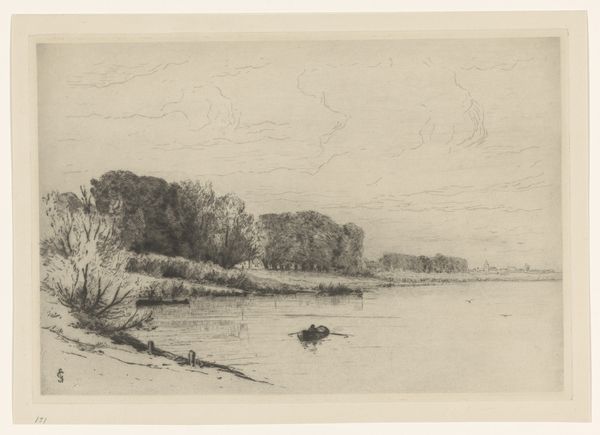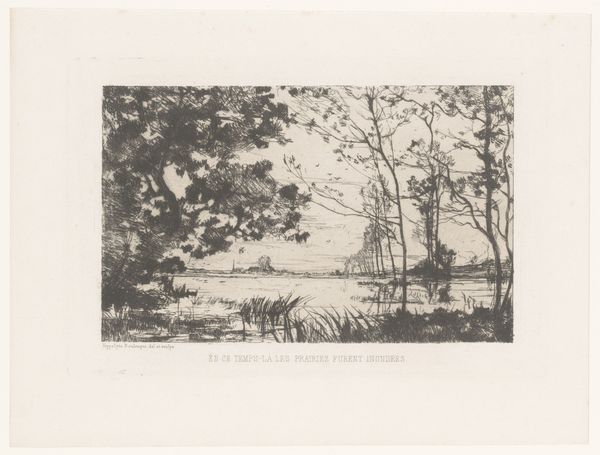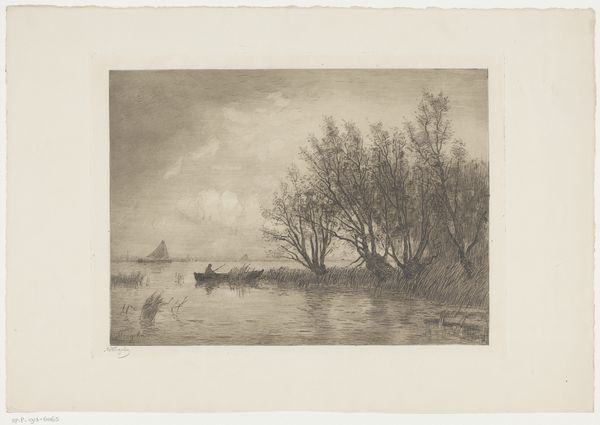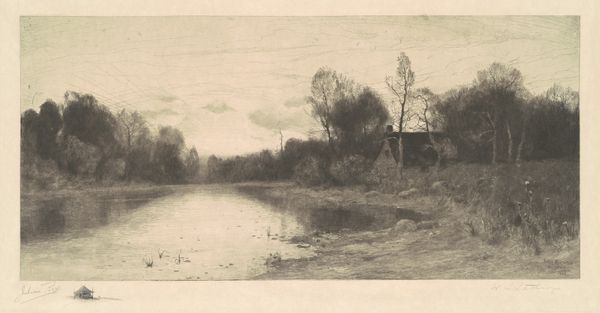
Dimensions: 96 × 258 mm (image/plate); 110 × 264 mm (sheet)
Copyright: Public Domain
Curator: David Young Cameron's "Murthly on the Tay," created in 1905, captures a Scottish landscape through the delicate technique of etching. Editor: There’s such a quiet, contemplative mood about this scene, a tranquility rendered with simple strokes. What strikes me most is how tangible the materials appear: the grainy texture of the paper support itself becomes part of the aesthetic experience. Curator: That texture certainly amplifies the romantic undertones of the image. Water, reflecting both the sky and the strong dark shapes of trees... It suggests nature as both a mirror and a deep well of symbols. Think of the boat and the people on the river--are they seeking adventure, or simply returning home? The symbolic weight is considerable. Editor: But beyond symbolism, look at the labor invested in this small print! Cameron's expertise in manipulating the etching tools--consider the chemicals, the acids, and the hours upon hours devoted to each plate. Then, that process is reiterated through countless printed impressions—it's all tied to specific production, consumption, and class relations within the art market. Curator: It does speak to a broader aesthetic trend, aligning with Impressionism's fleeting moments, and Romanticism's search for sublime, natural beauty, and also something particularly Scottish. It suggests the enduring pull of place—of Murthly and the River Tay—in the cultural memory. That specific location becomes a touchstone for feelings that have rippled across time and history. Editor: Yes, but even artistic interpretations of 'place' rely on real material landscapes altered by centuries of extraction, resource management, and use! Even a seemingly idyllic landscape print implicates power structures, both social and environmental. How have labor practices shaped both this print and the landscape that inspired it? Curator: So, viewing "Murthly on the Tay," it is tempting to see it purely as an artifact, or an emotional mirror—yet you rightly call our attention to its embodiment within broader industrial practices. Editor: And you’ve illuminated the persistent echoes that run through these types of familiar landscape images. Perhaps together, we find ways to deepen an appreciation of the past, while acknowledging all the layered histories within a work of art.
Comments
No comments
Be the first to comment and join the conversation on the ultimate creative platform.
